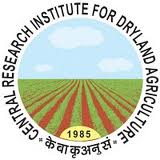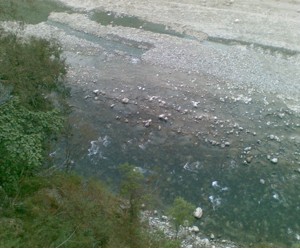/topics/climate-and-weather
Climate and Weather
Orissa, Bihar and Sikkim assess the damage done by floods and the earthquake - News Roundup (01 to 15 October 2011)
Posted on 12 Oct, 2011 02:13 AMThe work of repair and rehabilitation begins now. Assessments are being done of the assistance –and funds- needed in these two states.
Sikkim is beginning to assess the full extent of the damage caused by the 18th September earthquake. In addition to the loss of life, livelihoods have been severely impacted. The earthquake is also raising questions about the safety of the many dams planned on the Teesta.
Man-made floods in Orissa in September 2011- Key issues raised by Water Initiatives Orissa
Posted on 06 Oct, 2011 10:24 AMOrissa was hit by two spates of flood in September 2011, the first one being caused by heavy rains in the Mahanadi catchment and release of huge discharges from Hirakud dam. The second one was caused by heavy rains and flooding of Brahmani, Baitarani and Budhabalanga rivers. These floods point to the loopholes in river basin planning and management and calls for urgent attention of planners and policy makers.
CRIDA invites applications for research associates for project NICRA, Hyderabad – Apply by October 5, 2011
Posted on 02 Oct, 2011 09:36 AM
Description:
Central Research Institute for Dryland Agriculture (CRIDA), Hyderabad requires Research Associates in the following disciplines to work in the project National Initiative on Climate Resilient Resilient Agriculture (NICRA).
Floods in Orissa wreck havoc and an earthquake in Sikkim leads to a trail of destruction - A comprehensive compilation of recent floods and disaster-related news articles
Posted on 01 Oct, 2011 10:04 AM A look at the news in the month of September 2011, indicates that the month has experienced a range of events such as heavy floods in different parts of the country with Orissa being the worst affected state, a major earthquake in the North East with Sikkim being the most affected, reports of flash floods and landslides in various parts of the country as well as reports of heavy rainfall in different parts of the country with indications that the rainfall may further subside in the coming week.
A look at the news in the month of September 2011, indicates that the month has experienced a range of events such as heavy floods in different parts of the country with Orissa being the worst affected state, a major earthquake in the North East with Sikkim being the most affected, reports of flash floods and landslides in various parts of the country as well as reports of heavy rainfall in different parts of the country with indications that the rainfall may further subside in the coming week.
Different designs, same management: A note from Water Initiatives Odisha on Rengali dam and flood management
Posted on 28 Sep, 2011 09:57 AMWater Initiatives Odisha, brings out a special note on this issue in response to the latest spell of the flood disaster in northern Odisha Rivers.
Water conservation through better irrigation
Posted on 26 Sep, 2011 11:30 AMArticle and image courtesy: IndiaWaterReview

The agriculture sector in India, like elsewhere in the world, remains the largest consumer of water. As much as 80-85 per cent of India's available water resources are deployed annually in the agriculture sector, with industry being the second-most largest water consumer. But, contrary to the amount of efforts being put among industrial consumers to bring down their water consumption, agriculturists remain stuck on age-old methods and systems that lead to wastage of water.
So, while industry has been spending money on conducting in house research and development (R&D) to bring down their overall water consumption for making goods and products as well as deploying technologies that treat and reuse water and wastewater better, the agriculture sector has maintained status quo. Across India, farmers are still using flood irrigation methods for their crops. Most of them have not even head of drip irrigation or are so poor that they cannot afford to invest in drip irrigations systems.
Himachal Pradesh state policy on disaster management (2011)
Posted on 25 Sep, 2011 04:28 PMMain hazards that the state is prone to consist of earthquakes, landslides, flash floods, snow storms and avalanches, droughts, dam failures, fires – domestic and wild, accidents – road, rail, air, stampedes, boat capsizing, biological, industrial and hazardous chemicals etc.
"The water in springs of my hills is cool, do not migrate from this land, o my beloved" - Solving water shortages through ancient knowledge
Posted on 24 Sep, 2011 12:33 AMAuthor: Anupam Mishra
"The water in springs of my hills is cool, Do not migrate from this land o my beloved.”
Indicators of climate change in the middle Himalaya - A rapid inventory - Current Science
Posted on 22 Sep, 2011 01:22 PMThis article published in the journal Current Science presents the findings of a study that aimed at developing a rapid inventory on the impact of the recent climatic changes on the ecosystem, flora and fauna of the Himalayan region with a special emphasis on livelihoods.
"Meeting urban water challenges is matter of political will and priorities, not about technical solutions"
Posted on 17 Sep, 2011 08:55 AMGuest post by: Parineeta Dandekar
This year's World Water Week in Stockholm explored water and sanitation challenges faced by urban areas as well as the water, sanitation and equity challenges posed by urban areas. We take a look at some of the presentations and discussions that took place, especially with reference to India and South Asia.





